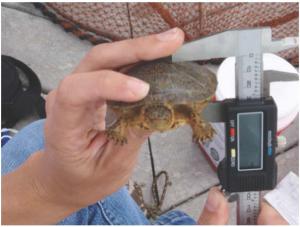 It all began, says the High Country News Goat blog, when a California man found a bobcat trap on his property next to Joshua Tree National Monument. He had not given the trapper permission, so he sought relief from the local police. The police told the man that not only had the trapper not done anything illegal, but he had better give the trap back, or he would be the one doing something illegal, the blog says.
It all began, says the High Country News Goat blog, when a California man found a bobcat trap on his property next to Joshua Tree National Monument. He had not given the trapper permission, so he sought relief from the local police. The police told the man that not only had the trapper not done anything illegal, but he had better give the trap back, or he would be the one doing something illegal, the blog says.
On January 1 a new law in California prohibited the trapping of bobcats in the area adjacent to Joshua Tree went into effect. Bobcat trapping in the area had recently doubled because of demand for bobcat furs in Asia, the blog says.
January 1 also saw the enactment of a new law limiting when and where nuisance mountain lions in the state can be killed.
Read the High Country News Goat blog detailing the new bobcat law, here.
Read a round-up of new California laws, including the bobcat and mountain lion laws, from KQED here.
And read a short item on the mountain lion law in Field & Stream, here.
Photo: Bobcat in New York State, courtesy of NYS Department of Environmental Conservation

 Ten red wolves have been shot on North Carolina’s northeastern coast in the past year,
Ten red wolves have been shot on North Carolina’s northeastern coast in the past year, The Mississippi Department of Wildlife, Fisheries and Parks says that alligators are under its authority, and a Wilkinson County couple should not be able to sue ExxonMobil over the alligators on the oil company’s property because wildlife is not private property, and managing wildlife is the department’s domain,
The Mississippi Department of Wildlife, Fisheries and Parks says that alligators are under its authority, and a Wilkinson County couple should not be able to sue ExxonMobil over the alligators on the oil company’s property because wildlife is not private property, and managing wildlife is the department’s domain,  There is a small population of mountain lions in the Santa Monica Mountains, just northeast of Los Angeles. The problem is,
There is a small population of mountain lions in the Santa Monica Mountains, just northeast of Los Angeles. The problem is,  It’s not news. Every once in a while someone sees something that either looks like a wolf or is proven to be a wolf in northern Maine. Sometimes this matters, such as when, as it did about 20 years ago, the US Fish and Wildlife Service kicks around the idea of returning wolves to Maine. Sometimes it doesn’t really matter. Most of the time, actually.
It’s not news. Every once in a while someone sees something that either looks like a wolf or is proven to be a wolf in northern Maine. Sometimes this matters, such as when, as it did about 20 years ago, the US Fish and Wildlife Service kicks around the idea of returning wolves to Maine. Sometimes it doesn’t really matter. Most of the time, actually. Chronic Wasting Disease (CWD) was first detected in Pennsylvania in 2012 at a captive facility in Adams County. Subsequently, three free-ranging deer harvested by hunters during the 2012 season tested positive for CWD. Now,
Chronic Wasting Disease (CWD) was first detected in Pennsylvania in 2012 at a captive facility in Adams County. Subsequently, three free-ranging deer harvested by hunters during the 2012 season tested positive for CWD. Now, Why are western pond turtle populations declining? The focus has been on habitat decline and competition from non-native red-eared sliders. Recently, researchers from University of California at Davis, California Department of Fish and Wildlife and US Fish and Wildlife Service teamed up for the first study of western pond turtle diseases.
Why are western pond turtle populations declining? The focus has been on habitat decline and competition from non-native red-eared sliders. Recently, researchers from University of California at Davis, California Department of Fish and Wildlife and US Fish and Wildlife Service teamed up for the first study of western pond turtle diseases. In an attempt to stop the spread of free-range Eurasian boar, the State of New York has proposed to ban the public from hunting or trapping them. Public comments are open until January 25, 2014.
In an attempt to stop the spread of free-range Eurasian boar, the State of New York has proposed to ban the public from hunting or trapping them. Public comments are open until January 25, 2014. Wyoming Game and Fish Department personnel, researchers with the Wyoming Cooperative Fish and Wildlife Research Unit at the University of Wyoming, personnel from the Bureau of Land Management and US Forest Service, and many volunteers are trapping mule deer for two research projects in southwest Wyoming, a
Wyoming Game and Fish Department personnel, researchers with the Wyoming Cooperative Fish and Wildlife Research Unit at the University of Wyoming, personnel from the Bureau of Land Management and US Forest Service, and many volunteers are trapping mule deer for two research projects in southwest Wyoming, a  A Utah Division of Wildlife Resources press release
A Utah Division of Wildlife Resources press release